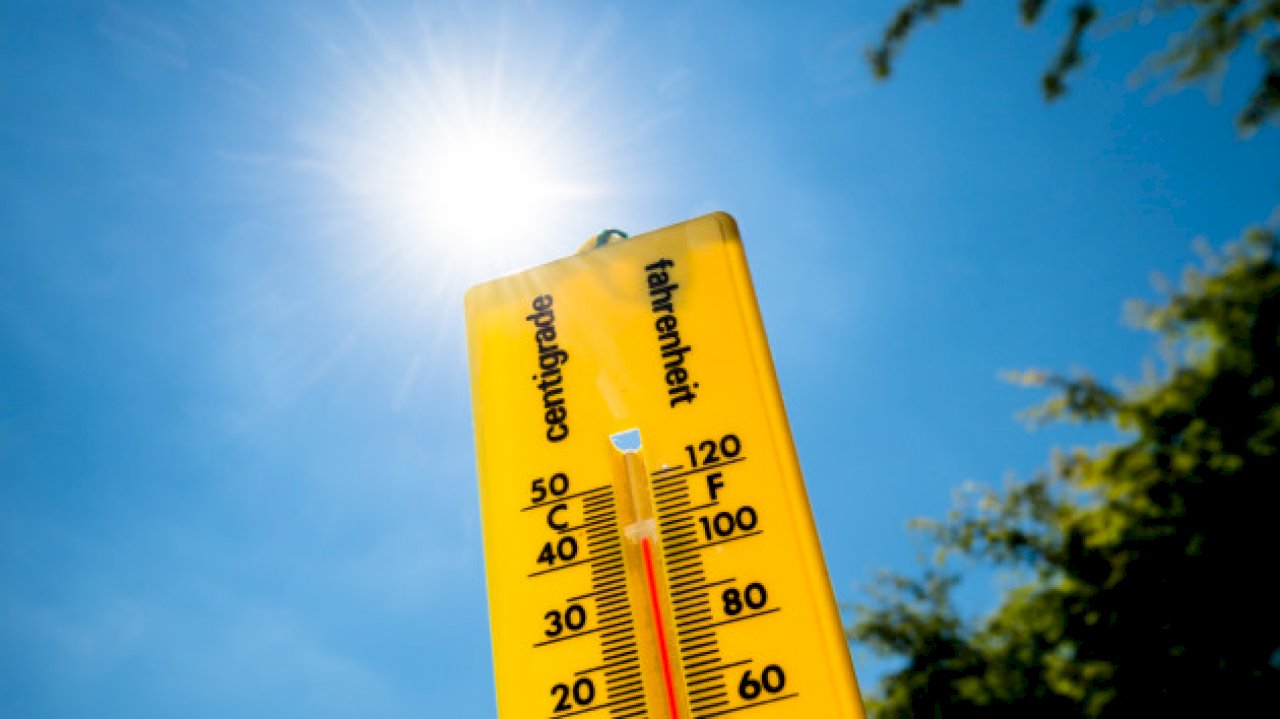Listeners:
Top listeners:
-
 play_arrow
play_arrow
94.3 Rev-FM The Rock of Texas | Where Texas Rocks
-
 play_arrow
play_arrow
99.1 The Buck Texas Country's Number 1 Country
-
 play_arrow
play_arrow
103.7 MikeFM Your Texas Hill Country Mix Tape
-
 play_arrow
play_arrow
KERV 1230 AM
-
 play_arrow
play_arrow
JAM Sports 1 JAM Broadcasting Sports 1
-
 play_arrow
play_arrow
JAM Sports 2 JAM Broadcasting Sports 2
The summer solstice is here, but that doesn’t mean the season’s hottest temperatures are, too

(NEW YORK) — This year’s summer solstice arrives as a dangerous heat wave affects millions across the country, with early-season extreme heat impacting parts of the Midwest and Northeast.
But the longest day of the year — which begins Thursday at 4:51 p.m. ET — is not typically associated with the hottest temperatures of the season in the U.S. The most scorching conditions typically occur much later in the summer, records show, with different regions of the country experiencing their warmest average temperatures at varying times. Brutal summer heat, however, will increase in frequency and duration for much of the country over the coming weeks and months.
The summer solstice marks the beginning of astronomical summer in the Northern Hemisphere, according to NASA. Astronomical seasons are determined by the Earth’s tilt on its rotational axis and its orbit around the sun and do not take into account temperature data, which is what determines meteorological seasons.
Solstices occur when the planet’s tilt is most pronounced. The summer solstice occurs when Earth’s tilt toward the sun is at a maximum, bringing the longest day of the year.
On the first day of astronomical summer, the sun is at its highest point in the sky and so delivers the most direct solar radiation to the hemisphere experiencing the summer season. However, it takes time for that solar radiation to begin warming the Earth’s atmosphere and surface, especially the oceans.
This time difference creates a lag between the first day of summer and when the Earth experiences the hottest temperatures of the year.
For the contiguous U.S., records show July is the hottest month of the year, on average, with the majority of the country — including much of the Northeast, Midwest, and West — experiencing the hottest temperatures of the year during the second half of July and first half of August. However, some regions of the country don’t typically experience their warmest average temperatures until August, or even September.
Much of the South typically experiences its peak average temperatures during the second half of August, while for some regions of the West Coast, the warmest temperatures of the year usually don’t occur until September.
For this summer, overall above-average temperatures are forecast across much of the country, with several significant heat waves likely for parts of the Northeast and Southwest.
Earth has experienced 12 months of record high temperatures, according to reports published earlier this month by the World Meteorological Organization and Copernicus, Europe’s climate change service.
The record-breaking trend is expected to continue through June and could potentially last through the rest of the summer, forecasts show.
Copyright © 2024, ABC Audio. All rights reserved.
Written by: ABC News
Similar posts
-
Top popular

Ingram man charged with murder after fatal shooting

Kerr Crime Stoppers offering reward up to $5,000 for information in last week’s non-viable school threat

KISD asks parents to communicate with children about words and actions after ‘copy cat’ threat note found at middle school

City of Kerrville Parks and Recreation reminds citizens that a Red Flag Warning is in effect until further notice

City of Kerrville says that May 7 General and Special Elections will proceed



